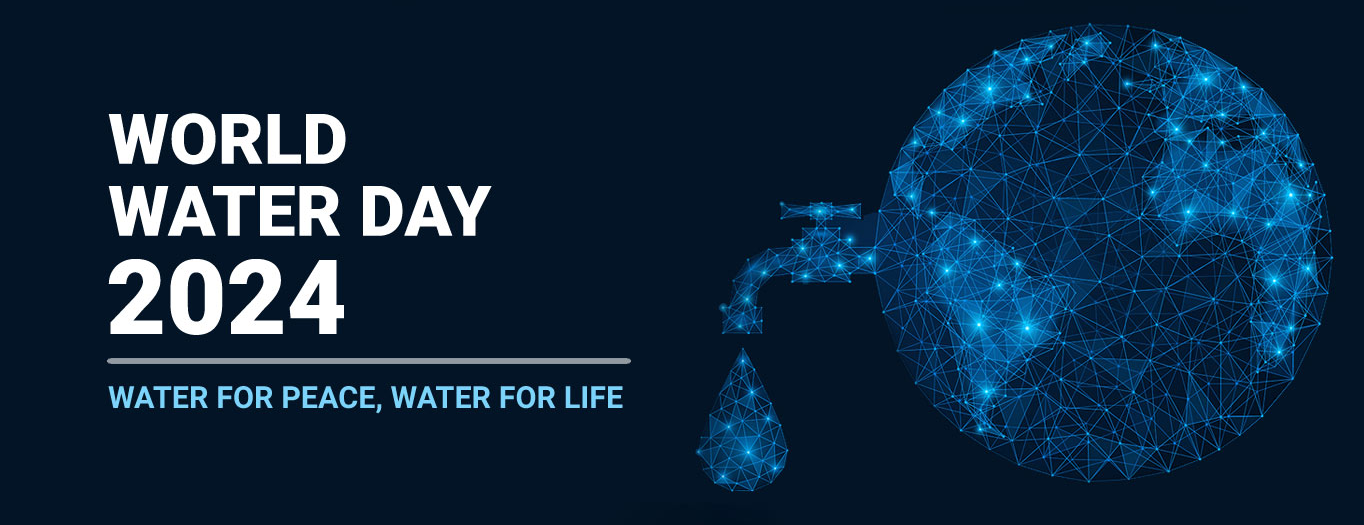
This article is a part of the essay series: World Water Day 2024: Water for Peace, Water for Life
Parched taps and bottled desperation have become the harsh reality for Bengaluru residents, emblematic of a broader water crisis gripping India's major cities. Bengaluru, known as India's IT powerhouse, faces a severe water shortage that threatens its future viability; however, it is not alone in this struggle. Cities like Mumbai and Chennai are also experiencing alarming water scarcity, signalling a potential collapse of urban health, safety, and sanitation systems if decisive action is not taken.
Climate change is expected to exacerbate these water challenges. Rapid urbanisation is turning cities into climate stress hotspots, intensifying both water demand and supply issues. If NITI Aayog’s Composite Water Management Index’s predictions are coming true, India is currently facing its worst water crisis in history, with 21 cities on the brink of depleting their groundwater resources.
Heatwaves exacerbate the urban heat island effect—an effect where the dense concentrations of pavement, buildings, and other surfaces in cities absorb and retain heat. This further strains water resources needed for cooling. With nearly 600 million Indians facing high-to-extreme water stress and approximately 200,000 deaths annually due to inadequate access to safe water, the situation is projected to worsen. The demand for water is expected to exceed supply by 2050.
India must develop a comprehensive framework for climate-resilient water management systems to reduce socio-economic vulnerabilities. As weather extremes become the ‘new normal’ in a climate-constrained world, India's critical water systems must be empowered to withstand and rapidly recover from the disruptions they cause.
India, however, lacks an explicit focus on effectively integrating climate concerns into water management. National government flagship schemes like the Atal Mission for Rejuvenation and Urban Transformation (AMRUT), Pradhan Mantri Krishi Sinchayee Yojana (PMKSY), Jal Shakti Abhiyan, and the National Groundwater Management Improvement Scheme prioritise enhancing service delivery. Although the National Action Plan for Climate Change (NAPCC) mandates local governments to incorporate climate adaptation and mitigation strategies into development projects, including water management, studies reveal that such efforts remain superficial, primarily aimed at meeting compliance requirements. This approach overlooks opportunities to comprehensively address the intricate relationship between climate change and water management.
An urgent imperative is to adopt an aggressive strategy that integrates climate resilience into all aspects of water management, including planning, design, infrastructure, operation, and maintenance, while addressing financial, technical, and capacity gaps.
Transforming water management from focusing on addressing security to ensuring sustainability necessitates effective on-the-ground implementation. In India, institutional bottlenecks hinder effective water management, characterised by a lack of coordination among multiple agencies. Departments often operate independently, focusing on urban water supply, sanitation, and wastewater treatment in isolation. This siloed approach leads to fragmented strategies rather than cohesive ones. Despite numerous organisations, ministries, and states involved in water resources management, inadequate communication and cooperation impede the development of comprehensive and sustainable strategies.
Furthermore, the majority of states lack real-time, comprehensive databases that capture climate and environment risks on water resources across regions and can project associated shifts in quantity, quality, and consumption patterns. This results in inefficient water management practices, misallocation of resources, and inadequate crisis response mechanisms.
By leveraging its technical capabilities in satellite imagery and IoT sensors, the government can generate real-time, context-specific data that can inform crucial strategies for adaptive water management in the face of shifting climatic patterns. Given the urgency to address the water crisis across India, it is imperative for all states to expedite the setting up of early warning facilities to develop the potential of geospatial technology, which includes information from Global Positioning System (GPS) and Geographical Information System (GIS) and Remote Sensing technologies for dynamic and accurate forecast of water scarcity.
Lastly, addressing India’s water woes needs a collaborative approach that extends beyond the government or public sector. Despite the substantial public funding available, India's reliance on the private sector is essential to alleviate budgetary strain and achieve its ambitious water initiatives. One effective method of encouraging private involvement is through Public-Private Partnerships (PPPs). PPPs have demonstrated their effectiveness as a “shared service delivery” model. While PPPs are common in urban development and climate adaptation, their potential in water management remains underutilised in India. Among a total of 1,825 projects at the national level, only 27 are dedicated to water supply and treatment PPPs, representing a mere 0.25 percent of the overall project expenditure as per Department of Economic Affairs data from December 2019.
Failures in these projects are often attributed to substandard due diligence, inadequate project preparation, unrealistic targets, imbalanced transfer of financial risks, and contracts given to under-resourced companies. In many cases, tariffs were set too low for cost recovery, barely covering operational and maintenance costs.
To improve the attractiveness of water PPPs, the government should evaluate past successes and failures, focusing on addressing financial challenges. Establishing clear regulatory frameworks and incentive structures will help the government attract private investment. Drawing inspiration from Singapore's NEWater programme, India could explore similar partnerships to advance water reclamation and recycling technologies, contributing to water security and sustainable urban development in the face of climate challenges.
The urgency to address India's urban water crisis is accentuated by the looming shadow of climate change. Securing continuous, clean water for all urban residents requires a collective will to embrace innovative management strategies, data-driven decision-making, and collaborative governance models with a profound commitment to integrating climate resilience into urban water governance.
By addressing water scarcity, India can safeguard its developmental aspirations and ensure the health and prosperity of its urban populations amidst climate uncertainties and rapid urbanisation.
Aparna Roy is a Fellow at the Observer Research Foundation.
Kashmeera Patel is a Research Associate at the Alliance for an Energy Efficient Economy.
The views expressed above belong to the author(s). ORF research and analyses now available on Telegram! Click here to access our curated content — blogs, longforms and interviews.




 PREV
PREV




